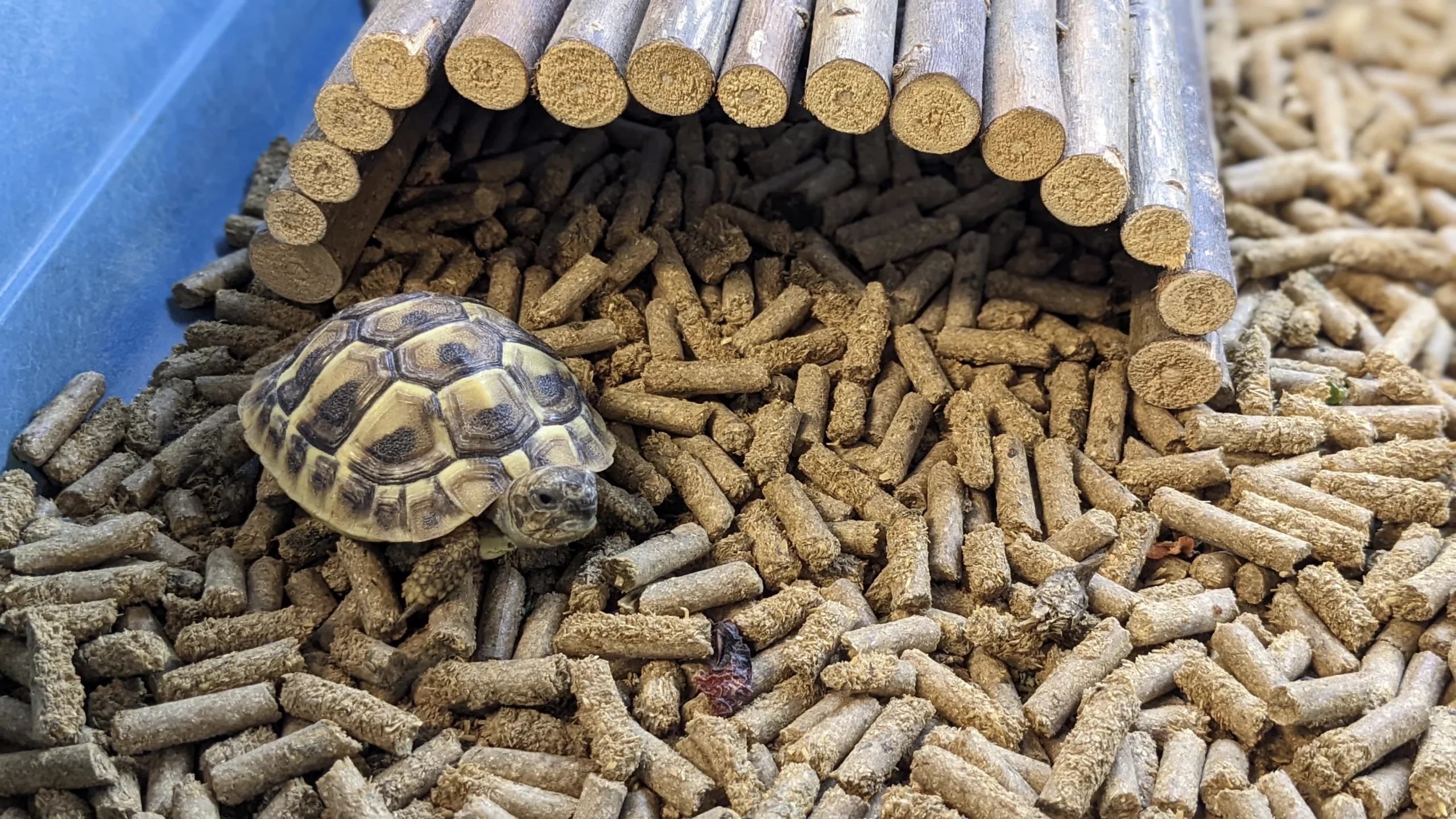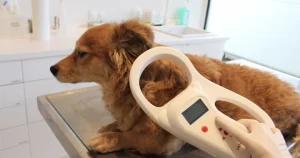Introduction
Mediterranean tortoises originate from the countries surrounding the Mediterranean and the Middle East. Their natural habitat is grassland and shrub where there is a lot of sunshine and light shade. The most common species kept in the UK is the Hermann s tortoise. Although other species such as the Spurred thigh and Marginated tortoise are kept.
A species requiring similar husbandry in captivity is the increasingly popular Horsefeld tortoise. Tortoises will grow annually in the right conditions and their shell scutes grow like the rings of a tree. Mediterranean tortoises can reach sizes in excess of 20cm. Life expectancy up to 80 years or more.
General Care
A healthy tortoise should be bright and alert with shiny eyes. Its body should be carried above the ground and the head and limbs should withdraw if alarmed. The shell should be hard and there should be no signs of the following:
- Diarrhoea: this can be caused by incorrect feeding or internal parasite infestation.
- Respiratory problems: signs include fluid or mucus from the nose.
- Mouth rot: cheesy deposits appear in the mouth.
- Soft shell disorders: can be due to a lack of calcium and/or vitamin D. Or incorrect lighting.
Your tortoise should be bathed weekly. If you are at all worried about the health of your tortoise you should consult your vet or a specialist reptile vet as soon as possible. Some reptiles carry a form of salmonella. Salmonella is most usually contracted by ingestion. Good hygiene and washing hands after handling or cleaning your tortoise should be sufficient to prevent any risk of infection.
Housing
Ideally your tortoise should have an indoor area and access to outdoors. Indoor accommodation: An escape proof vivarium with good ventilation is the most suitable type of indoor housing. The minimum cage size for an adult should be 90x30x40 cm for babies up to a 6cm carapace, rising to 2 square metres for adults.
- Outdoor accommodation: Tortoise should have access to escape proof outdoor accommodation whenever the whether is suitable. Ideally situated where there is natural non-toxic vegetation. Provide a basking area and opportunities to climb. All outdoor accommodation should be fox proof and a fully covered enclosure is essential for small tortoise to protect them from airborne predators.
- Temperature – All reptiles are cold blooded and need an external heat source to maintain their body temperature. Each species requires different degrees of heating, but all will benefit from a range of temperatures within the vivarium. One end of the vivarium should be heated. This creates a thermal gradient allowing the tortoise to choose its preferred temperature. Thermometers can be placed at each end of the vivarium to monitor the temperature range. The overall vivarium temperature should be controlled by a thermostat. Wire mesh guards should be fitted over all hot heat sources used in order to prevent thermal burns. Gentle heat can be provided by using heat mats and more intense heat by spotlights or UV heat lamps. Petwise can advise on heating products and their use suitable for your tortoise. Create a thermal gradient of 18°C at the cool end and 32°C at the hot end. Night temperature can be dropped to 18°.
- Lighting – Tortoises are diurnal and require UVB lighting to fully absorb and utilize the calcium in their diet. This light should be left on for 12-14 hours in the day. The bulbs will need replacing from time to time and Petwise staff will advise you.
- Furnishings – The floor of the cage should be covered with a suitable substrate such as Calci-sand, Coconut bark chips, Aspen wood shavings, or artificial grass. Provide a spot light or UV heat lamp for basking and place climbing rocks or branches beneath it. Provide a shelter, perhaps with a piece of cork bark and additional bark or branches to create areas for climbing.
- Cleaning – Remove droppings and uneaten food daily. Water and food bowls should be washed, dried and refilled daily. Vivariums should be completely cleaned out and disinfected with a pet-safe disinfectant regularly. Soiled substrate should be disposed of and replaced. Deodorisers can be used in the vivarium – Petwise can advise.
- Hibernation– This is a complicated procedure and you should ideally seek professional advice before you hibernate your tortoise., However before you consider hibernating your tortoise, it should be of sufficient size and weight and be showing no signs of illness to cope with the stress of hibernation. Your tortoise should be fasted for 2-3 weeks before hibernation (though fresh water must be provided). Your hibernation box should be well ventilated and be made of rat roof materials. The temperature should not fall below 2-3 C and not above 8C (optimum temperature is 5C). You should check your tortoise at regular intervals during hibernation.
Feeding
Mediterranean tortoises are herbivores. Provide a varied high fibre diet low in fat and protein. Commercial pellets are available as pert of a balanced diet and your Petwise can advise.
Vegetables: Mixed vegetables and weeds such as, dandelion, groundsel, clover and sowthistle.
Fruit: apples, berries, fresh and frozen (thawed) orange, grapes, kiwi, pear, fed occasionally in small amounts.
Fruit and vegetables should be washed and dried before feeding and offered in bite size pieces. A Calcium supplement and a separate multi vitamin should be provided. Fresh water should always be available.
The Law
Mediterranean tortoises are protected by CITES regulations, all are sold, with the exemption of the Horsefeld tortoise, with a Defra exemption certificate. They must be micro chipped when big enough.
Shopping List
- Vivarium
- Heat mat/spotlight
- Substrate
- UVB tube/UVB heat lamp
- Thermometers x 2
- Thermostat
- Food and water bowl
- Calcium supplement
- Pet safe disinfectant
- Cage furnishings
- Vitamin supplement
- Tortoise care book
All the items required can be purchased at Petwise Aquatics.
Remember: Never release your pet into the wild.




